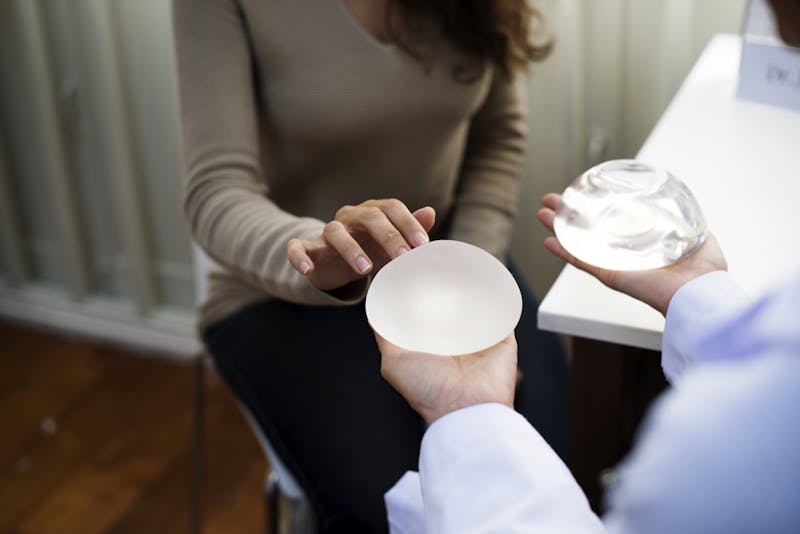
28 May 2025 | by Dr. Vickram Tandon
Deciding that you want a breast augmentation is only the first step in your journey towards a more ideal body contour. There are a number of other decisions that you and your plastic surgeon will need to make in order to develop an appropriate treatment plan for achieving your desired outcome. Every woman’s body is unique so what worked for your best friend may not be the right path for you. This is why it’s critical to schedule an in-person consultation with a Board-Certified Plastic Surgeon, such as myself, who has extensive experience in all aspects of breast surgery. One of the primary decisions that will need to be made is choosing which type of breast implant — saline or silicone. This is a topic with a lot of media coverage that isn’t necessarily accurate. Is a silicone breast implant better than a saline one? While I typically place a round, silicone gel breast implant, the right option is always going to come down to the individual patient. Here are some things to consider.
Silicone Implants Look and Feel More Natural
A founding pillar of my practice philosophy is to always deliver a natural-looking, long-lasting result. Silicone gel breast implants will more closely mimic the look and feel of your native breast tissue. This is due to the cohesive properties of the silicone gel fill. It is soft and supple with more of the weight of a natural breast. Further benefits include:
- Moves with your body
- Retains its shape
- Conforms to contours of your breast tissue
- Less prone to rippling
- Safe
Saline implants, which are filled with a liquid solution, may actually feel more rigid and hard to the touch. They are typically more palpable in thinner patients who have less breast and fatty tissue.
Silicone Gel Breast Implants are Completely Safe in Boston
If a potential breast augmentation patient expresses concern about using a silicone implant, it is typically due to the question of whether or not they are safe. I take the health and safely of my Boston area patients very seriously. Delivering a safe, exemplary result is my primary job. As a breast surgery expert, I can tell you with certainty that silicone gel breast implants are one of the most studied devices in the world. Furthermore, the rupture rate of silicone is actually lower than with saline. The real downside to silicone implants is if they do develop a tear or leak, your breast will not deflate like it will with a saline implant and, therefore, you will not be aware of the rupture. This kind of “silent rupture” can only be ascertained with an MRI. Part of my post breast augmentation protocol is not only an annual visit in order to monitor the health of your breasts, but also a recommended MRI starting 5 years after surgery. An MRI can determine if there is or is not a rupture. This MRI should be repeated every 2-3 years until your implants are exchanged which should be around 12-15 years after surgery.
Ideal Patient for Saline Implants
The safety of silicone implants has been proven time and time again, in numerous medical studies. Having said that, some women simply don’t like the idea of placing a foreign substance like silicone in their bodies. The outer lining of bother saline and silicone gel implants, however, are the same. Saline is naturally occurring in the human body. And, as mentioned, if a saline implant does rupture, you will know it immediately as your breast will deflate. For these patients, reducing their anxiety is a fair trade-off for a less natural look and feel. At the end of the day, implant choice is personal and while I will always be honest about what a specific implant can and cannot achieve on your body, the final choice is always up to you.
To find out more about a breast augmentation, or any other surgical or non-surgical procedure with Dr. Sean Doherty at Boston Center for Plastic Surgery, contact us
today or call (617) 450-0070 to schedule a consultation.
